Introduction
This guide takes a deep dive into the world of habit formation in the news industry, exploring how publishers can adapt and innovate to keep up with the digital era. For centuries, newspapers have been a part of daily routines, and as the way we consume news continues to change, it’s essential to understand the science behind habit formation. This guide provides valuable insights into leveraging digital mediums such as newsletters, podcasts, and personalised content to create and maintain news habits among readers. Whether you’re an experienced publisher or new to the field, this guide offers valuable strategies and real-world examples to help you navigate the evolving landscape of news consumption.
Download the report

The Science Behind News Habit Formation in News Publishing
Newspapers have been part of readers’ routines for a long time
Newspapers as products have existed for over 400 years, and news organisations have long understood their habitual role in people’s daily routines. The tradition of receiving the newspaper each morning has created a strong habit among readers. But how can publishers replicate the same reading habits in their digital products? Despite its challenges, the transition from physical to digital newspapers offers numerous opportunities to publishers. For example, developing new products for different times of the day or targeting specific audience segments can effectively tap into readers’ internal triggers and build new habits. Underlying each product solution is an understanding of how to leverage habits. Let’s have a look at how habits are formed and the science behind them.
What are the most important habit formation theories?
Nir Eyal’s Hook Canvas and Charles Duhigg’s Habit Loop are valuable theories for understanding habit formation. Nir Eyal’s Hook Canvas illustrates how specific triggers can prompt repeated actions. This model comprises four elements: a trigger, an action, a variable reward, and an investment by the user. This creates a loop that encourages repeated behaviour. Charles Duhigg offers a similar framework to understand habits, showcasing the cue, routine, and reward cycle. Since frequent engagement is a key factor in retaining subscribers, understanding these habit frameworks is invaluable to those in the news industry.
The concept of triggers is at the heart of both Eyal and Duhigg’s frameworks. Actions are triggered internally, by a reader’s desires, or by an external factor. Newsletters or push notifications, for instance, serve as a critical external trigger, fostering more loyalty than other traffic sources like social media or search. On the other hand, someone’s desire to remain informed about world events is an internal trigger. Regardless of whether they are internal or external, triggers lead to an action, also known as a routine in Duhigg’s framework.
The next step after identifying triggers is focusing on the following action or routine. The action is what the user does in response to the trigger. For instance, in the news industry, when a reader receives a newsletter (an external trigger), the action would be opening and reading it. Both theories emphasise that the action or routine should be easy and rewarding to encourage repetition, thus forming a habit. This stage is critical for habit formation, as it bridges the initial trigger with the eventual reward, creating a loop that encourages repeated behaviour.
Another important aspect of habit formation, shared by the Hook Canvas and Duhigg’s cycle, is rewarding positive behaviour. Designing news products and experiences that give a feeling of completion, such as editions, can counter the overwhelming influx of information and contribute to building sustainable daily news consumption habits. Incorporating unpredictability in content while maintaining a predictable publishing schedule also plays a significant role in keeping readers engaged and forming habits.
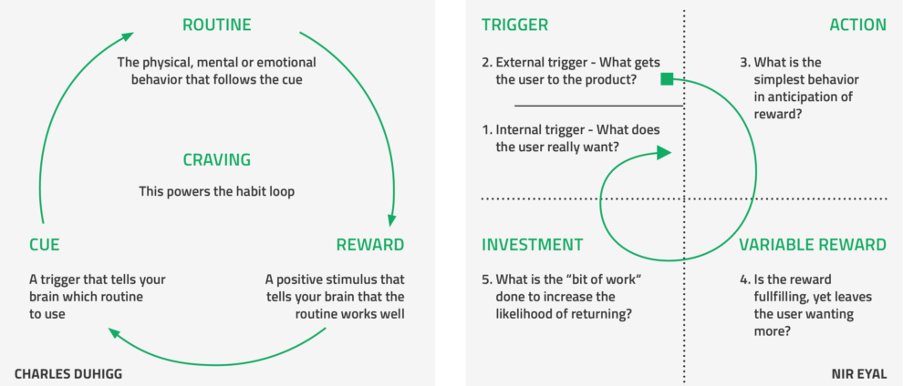
💡 A tool that can be incredibly useful when designing new habit-forming products is Twipe’s Habit Formation Canvas.
Examples of news habits that are relevant to industry professionals
Understanding and strategically leveraging habits can lead to increased and more consistent engagement with publishers’ content. By aligning news consumption with readers’ daily routines, publishers can become partners for life for their readers. Below are some key takeaways of how publishers can leverage readers’ habits.
1. Drinking Coffee and Reading a Newspaper in the morning
The morning ritual of coffee and newspapers is a classic example of how a simple activity can become a cherished habit. The act of brewing coffee sets the stage for a session of news consumption, intertwining relaxation with staying informed. This routine, especially when shared with others, enriches mornings with intellectual stimulation and social interaction.
Key takeaway for publishers: Having readers associate news consumption with pleasurable activities will make it more likely for new habits to stick.
2. Listening to News Podcasts During Commutes
The habit of listening to news podcasts during commutes turns travel time into an informative experience. This routine provides a productive distraction, whether driving or using public transport. The reward comes from engaging content, making the commute an anticipated opportunity for personal growth and global connectivity.
Key takeaway for publishers: Offering content in different formats gives more opportunities to readers to consume news wherever they are.
3. Discussing Current Events with Colleagues
According to Nir Eyal’s Hook Canvas, the desire to be well-informed is an internal trigger. This can translate into staying on top of the news to engage in conversations and contribute meaningfully to discussions about current events at work or in other social situations. This habit satisfies intellectual curiosity and fosters a sense of community, which contributes to building a stronger internal trigger.
Key takeaway for publishers: Understanding the internal triggers that drive news consumption to create content that resonates with readers’ needs.
“When a product is tightly coupled with a thought, an emotion, or a pre-existing habit, it creates an internal trigger”
Nir Eyal
4. Reading a Weekly Newsletter Over Lunch
Many cultivate the habit of reading a weekly newsletter during lunch, a perfect time for uninterrupted focus. The scheduled arrival of these newsletters acts as a cue, building anticipation and seamlessly integrating into one’s lunchtime routine. Publishers can enhance this by creating concise, engaging content that respects the reader’s time, making this habit a cherished part of their midday break.
Key takeaway for publishers: Planning digital news delivery around readers’ existing schedules can make news reading a more natural and anticipated part of their day.
5. Checking Breaking News Notifications from News Apps
Modern technology has introduced the habit of checking news notifications in our daily routines. Each alert from a news app prompts immediate engagement, making us instinctively reach for our phones. This habit, reinforced by the relevance and timeliness of the content, keeps users connected and informed, turning a simple notification into a significant part of their day.
Key takeaway for publishers: Making expert use of push notifications can effectively increase user engagement.
Fostering News Reading Habits Through Different Mediums
Editions as finite products for a curated news experience
A newspaper edition is opposed to the 24/7 news cycle, as it has a defined start and an end. This is also true for digital editions, which redefine how we consume news, offering a blend of curated, well-structured content that fits neatly into our busy lives. Their growing appeal lies in their ‘finishable’ nature — each edition has a clear beginning and end, a refreshing change in today’s endless online news cycle. This structure is crucial in developing news habits by setting clear boundaries and expectations for the reader. This means that readers can enjoy a reliable, trustworthy news experience, often tailored to their interests.
These editions come in various formats: Replica editions, which closely resemble a printed newspaper with additional interactive features, and NextGen editions, which are better suited to a modern news-consumption routine on a mobile device.
The way people engage with news is changing, and digital editions are keeping pace. We have the News Lovers, who dive into news constantly, the Daily Briefers, who check in a few times a day, and the Casual Users, who catch up less often. This variety in news consumption habits underscores the need for diverse digital edition formats to meet everyone’s preferences.
The release timing of these editions is just as important as their content. Publishers like Le Monde and The New York Times have mastered this, launching editions at regular intervals that sync up with our daily routines — like during our morning coffee or evening unwind time. This regularity builds a habit and weaves the news seamlessly into our daily rhythm, creating a sense of anticipation and ongoing engagement with our preferred news sources.
In conclusion, the success of editions in the digital era lies in their ability to adapt to modern consumption patterns while retaining the core attributes that have made them a mainstay for centuries. By understanding and catering to readers’ diverse preferences and routines, publishers can effectively integrate digital editions into the daily lives of their audience, fostering a habit of consistent and engaged news consumption.
Using Newsletters to Build and Sustain Reader Habits
Newsletters are an essential tool for news publishers to engage with readers. Publications like The Economist and Les Echos report higher subscription rates and greater reader loyalty among newsletter recipients, underlining their importance in the news industry.
Key to this success is the adherence to a consistent distribution schedule. This regularity establishes newsletters as reliable triggers in the reader’s daily routine. Aligning with Nir Eyal’s Habit Loop model, newsletters effectively engage readers through a cycle of:
- Trigger: The arrival of the newsletter;
- Action: Reading the engaging content;
- Variable Reward: The satisfaction and value derived from the content;
- Investment: The reader’s time and emotional engagement.
In addition, designing newsletters with “finishability” in mind – ensuring they are concise and satisfying to complete – mirrors the appealing finality of traditional newspapers. This approach caters to the modern reader’s preference for concise, valuable content that respects their time and contributes to a rewarding reading experience.
When strategically used, newsletters are an effective tool for instilling habits in readers; they become an integral part of the reader’s daily life, reinforcing the trust and connection between the publisher and its audience.
The Engaging World of Games and Puzzles
Puzzles and games are another medium that can benefit subscriber engagement and retention. Publishers like The New York Times and The Guardian have effectively used puzzles to increase subscriber engagement and loyalty, and the Daily Mail reports that half of its regular subscribers are daily puzzle players.
Puzzles and games in newspapers offer an interactive experience contrasting typical passive news consumption. This interaction fosters a daily routine of engagement with the news platform. Additionally, games provide a mental break from more serious news content and a form of leisure and entertainment. The sense of achievement from solving these challenges can become a compelling reason for daily visits to the news platform.
Publishers have combined the traditional appeal of crosswords and puzzles with innovative digital formats, appealing to a broad audience. This blend of nostalgia and modernity helps maintain loyalty among existing subscribers while attracting new ones.
Explore this topic in more detail by reading our article about how games and puzzles can enhance subscriber growth.
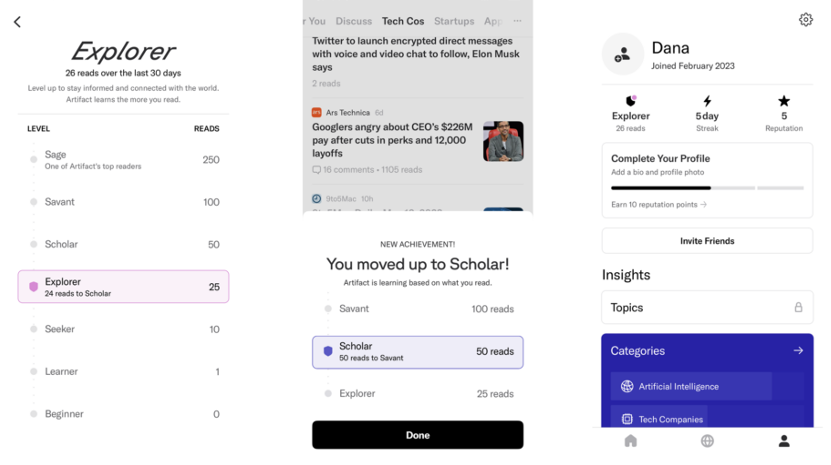
The Growing Role of Audio in News Consumption
A medium that many routinely engage with is audio, through music or podcasts. Flexibility is what makes audio a perfect fit for busy lifestyles, allowing readers to stay informed while multitasking.
Audio editions of newspapers, which package news content in an easily digestible format, cater to the audience’s desire for structured and complete news experiences. This structured experience contrasts with the overwhelming nature of digital newsfeeds that often make readers scroll endlessly. The human voice in audio content creates a more intimate and engaging experience, and this personal connection can also foster a strong habit of regular listening among subscribers.
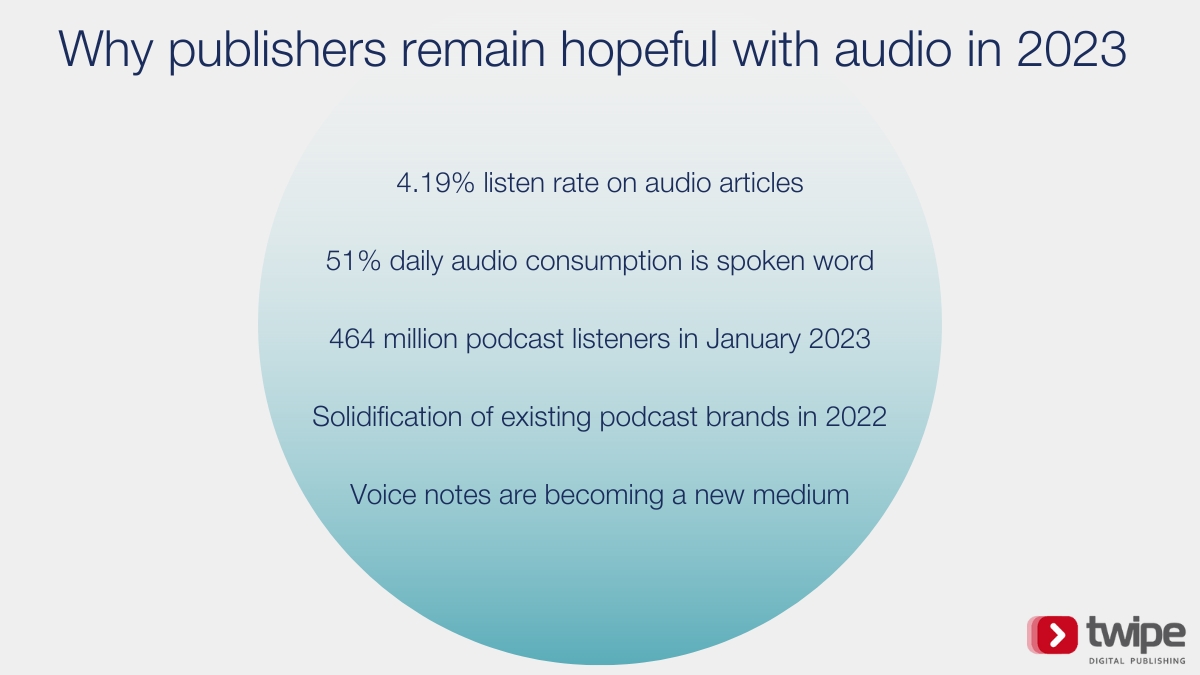
Publishers like The Economist and The Washington Post have noted the positive impact of audio content on subscriber retention. Audio listeners are often the most loyal and engaged users.
Our evidence suggests that the audio edition is a very effective retention tool;
Tom Standage, Deputy Editor, The Economist
once you come to rely on it, you won’t unsubscribe.
Personalisation and Content Curation in Building Habits
Personalisation and content curation also stand out as sophisticated means to solidify news habit formation further. Digital transformation has enabled personalisation at scale, allowing publishers to analyse user profiles and optimise engagement across various platforms and mediums. By tailoring content through newsletters and news feeds or crafting customised offers based on consumer behaviour, publishers can deliver a highly personalised experience to each subscriber. Utilising tools like push notifications enhances this personal touch, while systems like JAMES take personalisation to the next level by automating the delivery of content that resonates personally with each reader, significantly boosting engagement.
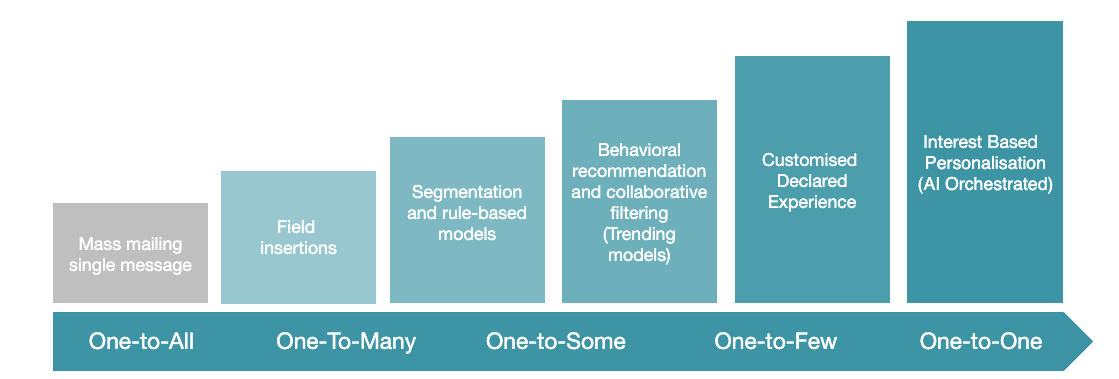
How news publishers leverage personalisation to retain subscribers
Personalisation in news content involves tailoring articles and features to match individual reader preferences, thus encouraging news habits. Leveraging algorithms and reader insights can significantly enhance the user experience. Analysing reader behaviour and predicting what topics they are most likely to engage with is an effective tactic to increase reader engagement. Other possible ideas for personalisation are:
- Sending push notifications or newsletters at the time when a reader is most likely to engage, based on their schedule;
- Sending a personalised newsletter with the most relevant news for the reader;
- Gamification of news reading to encourage readers to engage with the newspaper’s content more;
- Sending a personalised offer, such as a subscription at a discounted rate on a reader’s birthday.
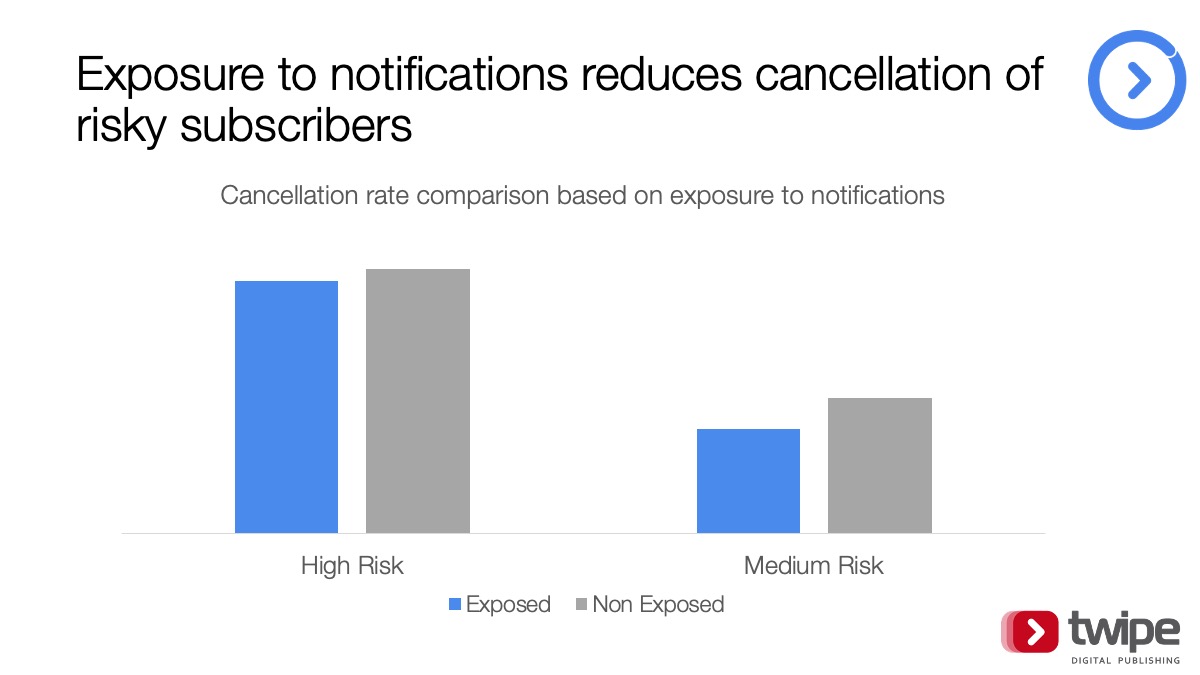
Many publishers have successfully used personalised push notifications, ensuring each reader receives content most relevant to them, thus improving engagement and loyalty. JAMES, Twipe’s personalised newsletter system, is used by leading publishers to provide their subscribers with a personalised digest.
Why are personalised newsletters such a strong driver for habit creation?
JAMES and personalised newsletters have repeatedly proven to be effective drivers of engagement. In the JAMES pilot test, 60,000 subscribers were sent a daily personalised newsletter, and the click rate increased from 16% to almost 50% by the end of the experiment. But how does personalisation facilitate the habit formation process?
- Personalisation: By analysing user behaviour and preferences, the JAMES system can deliver increasingly targeted content that resonates with each subscriber. As emails become more relevant to the individual, subscribers are more likely to engage with the content. Personalisation makes the content feel explicitly curated for them, increasing the likelihood of interaction.
- Improved Content Relevance: The increase in clicks and opens suggests that, over time, the system has become better at predicting what content will interest readers. This relevance encourages subscribers to open emails and actively engage with the content by clicking through.
- Trust and Anticipation: Trust builds as JAMES delivers personalised content that aligns with users’ interests. Subscribers may begin to anticipate the arrival of the newsletter, looking forward to the content, which further ingrains the habit.
- Reduced Friction: Effective personalisation reduces the friction of deciding whether to engage with an email. When subscribers feel that the content will be relevant, they are less likely to hesitate and more likely to open and click.
- Reinforcement and Reward: Each click and opened email that leads to satisfying content acts as a reward, reinforcing the habit loop. Subscribers are rewarded with valuable information or entertainment, encouraging them to repeat the behaviour.
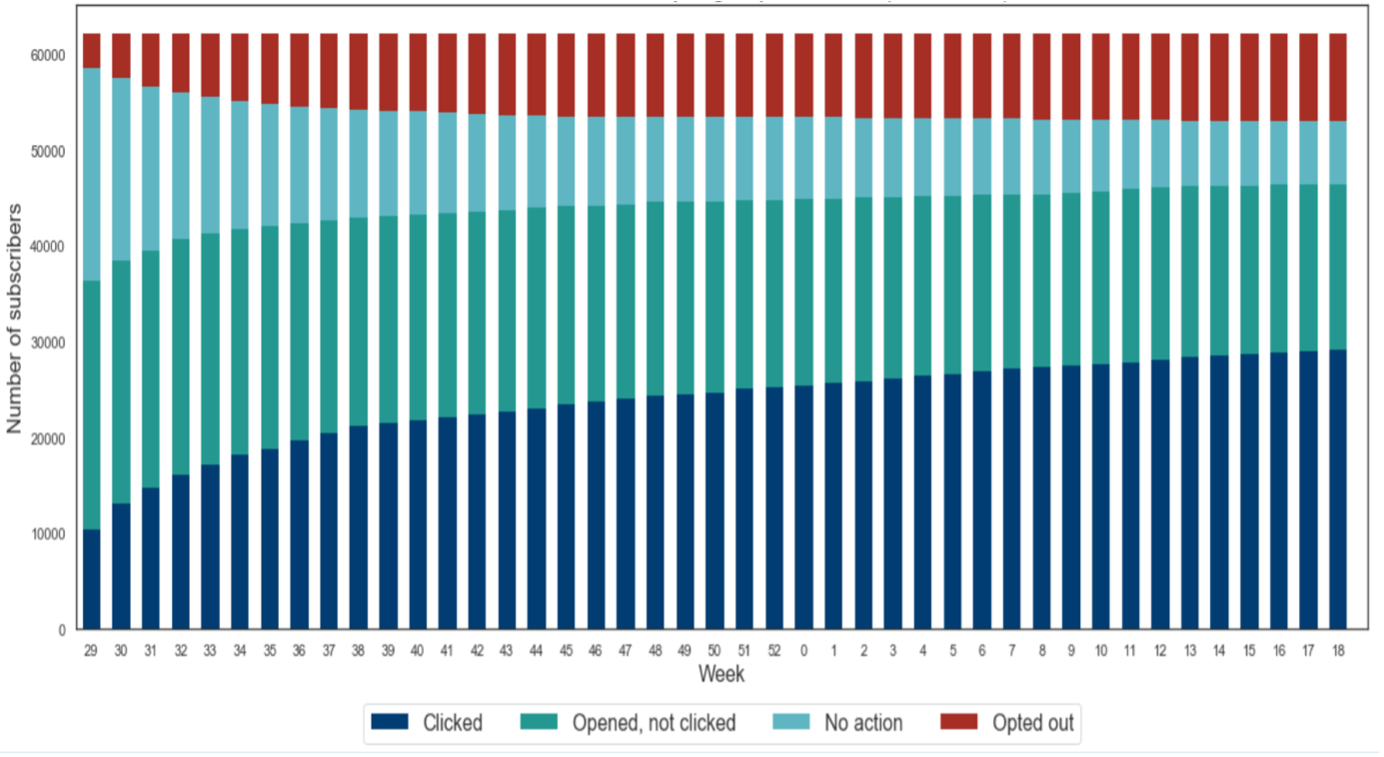
The data reflects the success of a strategic approach to habit formation through personalisation. Publishers can significantly boost engagement by delivering the right content to the right user at the right time, driving immediate actions (clicks) and sustained interest (opens). This success showcases the power of leveraging sophisticated data analytics and personalisation tools in digital marketing strategies.
In short, personalisation and content curation, especially through the strategic use of push notifications and personalised automated systems like JAMES, are key to developing sustained news habits. These methods enrich the content offering and ensure regular reader engagement, which is crucial for building a loyal subscriber base.
Challenges publishers face in forming news habits
While personalised newsletters have proven to be effective in building stronger habits among readers, publishers still face several obstacles in making their content a part of their readers’ daily routines.
For one, publishers face relentless competition for attention against tech giants that set high user experience standards. Adapting to these standards while maintaining a unique value proposition is a significant challenge, requiring publishers to constantly innovate and refine their content delivery.
Publishers also face difficulties inserting themselves into the daily activities of their readers. It is crucial for them to understand how to fit news consumption into readers’ existing routines, such as morning checks of their devices or listening to audio during commutes. The challenge lies in inserting news consumption into these habits without disrupting them, a delicate balance that requires understanding the nuances of consumer behaviour.
In terms of content, finding the right balance between predictability, which comforts readers, and novelty, which excites them, is challenging. Publishers must experiment with formats, like gamified news experiences or concise briefings, that can keep readers engaged without leading to undesirable habits, such as engaging only during promotional periods.
The products through which readers engage with the news also need considerable investment. Encouraging behaviours like archiving favourite articles or customising feeds can foster a sense of ownership and commitment to the platform. However, driving this deeper interaction requires intuitive design and features that resonate with users’ needs.
Finally, one of the foremost challenges is the need for an organisational transformation towards a data-driven culture that prioritises reader engagement. Such a change often requires a fundamental shift in mindset and operations, with agile processes and short feedback cycles at its core. However, the challenge lies in adopting new processes, achieving cross-departmental synergy, and overcoming resistance to change.
Reflecting on these challenges, it becomes evident that the path to habit formation in news publishing is multifaceted. It requires innovation, a reader-centric approach, and sophisticated data analytics to understand and predict reader preferences. Overcoming these challenges is about offering content and crafting an experience that aligns with the readers’ lifestyle and preferences, making the news platform an indispensable part of their daily habits.
Conclusion
Establishing habits in news publishing is a complex and multifaceted process that requires a profound understanding of reader behaviour, innovative content delivery, and a dedication to continuous adaptation. From the traditional appeal of newspapers to the personalised approach of digital editions, the strategies discussed in this guide emphasise the importance of engaging readers and establishing news habits through various mediums and routines.
By embracing these methods and overcoming challenges, publishers can effectively create a loyal subscriber base and ensure their content remains vital to readers’ daily lives. The key to success for publishers lies in staying attuned to readers’ preferences and consistently providing value, making your news platform an essential part of their daily habits.
Other Blog Posts

Stay on top of the game
Join our community of industry leaders. Get insights, best practices, case studies, and access to our events.
"(Required)" indicates required fields

